This Gluten-Free Vegan Bread is nothing like other gluten-free breads I've tried: it's soft and bendy, crusty on the outside and pillowy on the inside! It's not dry or crumbly, hard or spongy or overly chewy. It's super easy to make, no-knead, yeast-free, oil-free, nut-free and contains no added sugar. There's no kneading required, no proving time needed, it's made in one bowl and requires just 15 minutes of prep time before baking! It's also filling and nutritious, and high in protein and fibre. It slices well and is perfect for toast and sandwiches!
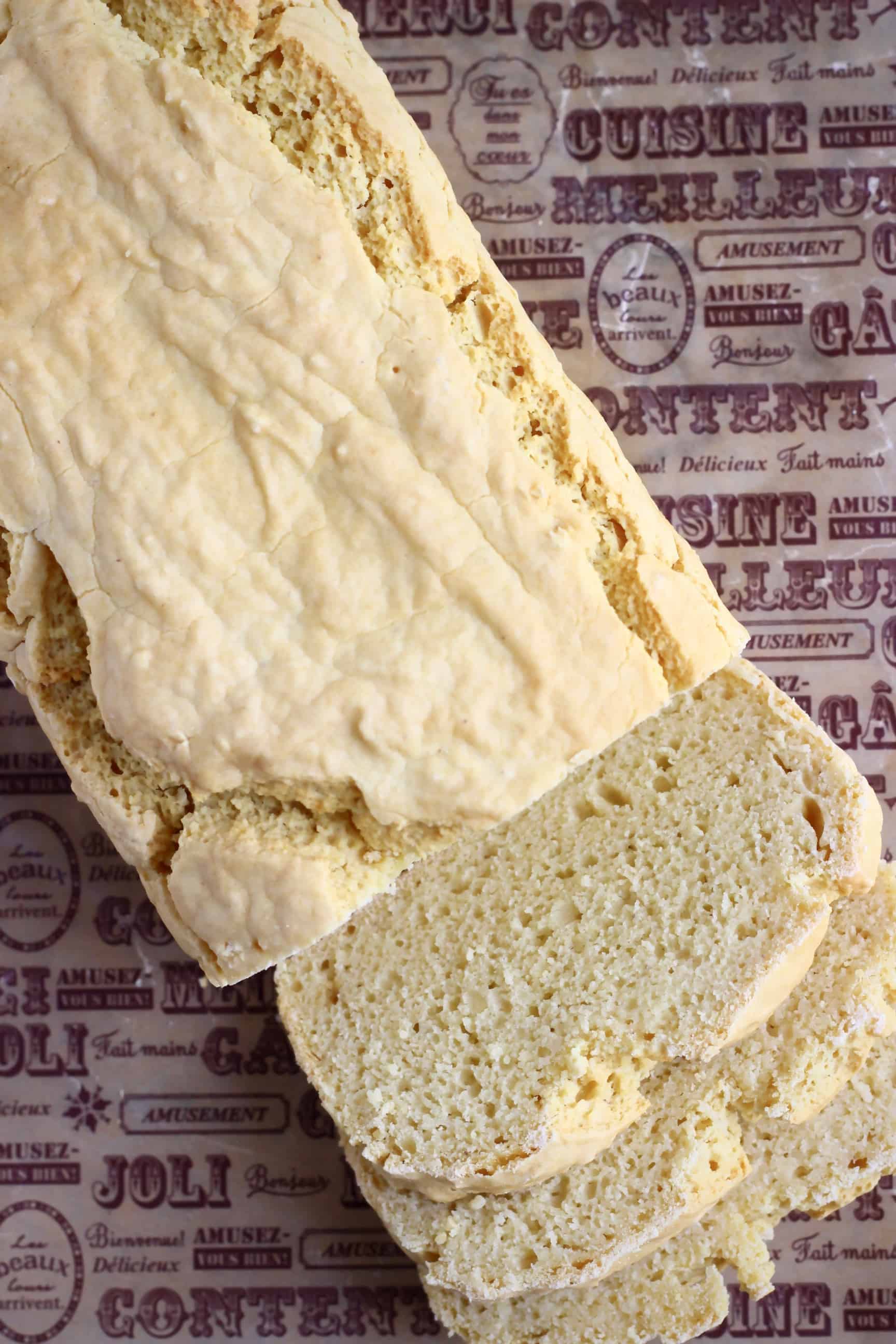
Ingredients
- Chickpea flour – also known as gram flour, it's made ground up chickpeas. It's cheap, nutritious, protein-rich and seriously versatile. It gives the bread a subtle nutty flavour (but doesn't taste overwhelmingly of chickpeas, don't worry!) and creates a perfectly chewy texture.
- Rice flour – balances out the slightly heavier chickpea flour and keeps the bread light and fluffy.
- Tapioca flour – helps to bind the mixture together without gluten or eggs, and stops the bread from being dry or crumbly.
- Baking powder - acts as a raising agent instead of yeast.
- Bicarbonate of soda (baking soda) - another raising agent.
- Apple cider vinegar - its acidity reacts with the alkali bicarbonate of soda to make a bubbly batter which keeps the bread soft. You can replace it with lemon juice.
- Water.
Yes - if you don't want to use chickpea flour, you can find similar recipes I've posted using different flours instead. You might want to check out my rice flour bread recipe, buckwheat flour bread recipe or almond flour bread recipe. Or browse the whole bread recipes collection!
Yes - if you don't have rice flour you can substitute it with an all-purpose gluten-free flour blend and leave out the tapioca.
I have also tried replacing the rice flour with buckwheat flour, and while the recipe worked, the texture was much heavier and it had a stronger flavour. I would definitely recommend rice flour over buckwheat flour for this reason!
Yes - as long as you replace the rice flour with all-purpose gluten-free flour blend.
No! The purpose of the tapioca is to bind it together so you don't need to add xanthan gum too. If you don't have tapioca, I wouldn't recommend replacing it with xanthan gum either - just use an all-purpose gluten-free flour blend in place of the rice flour.
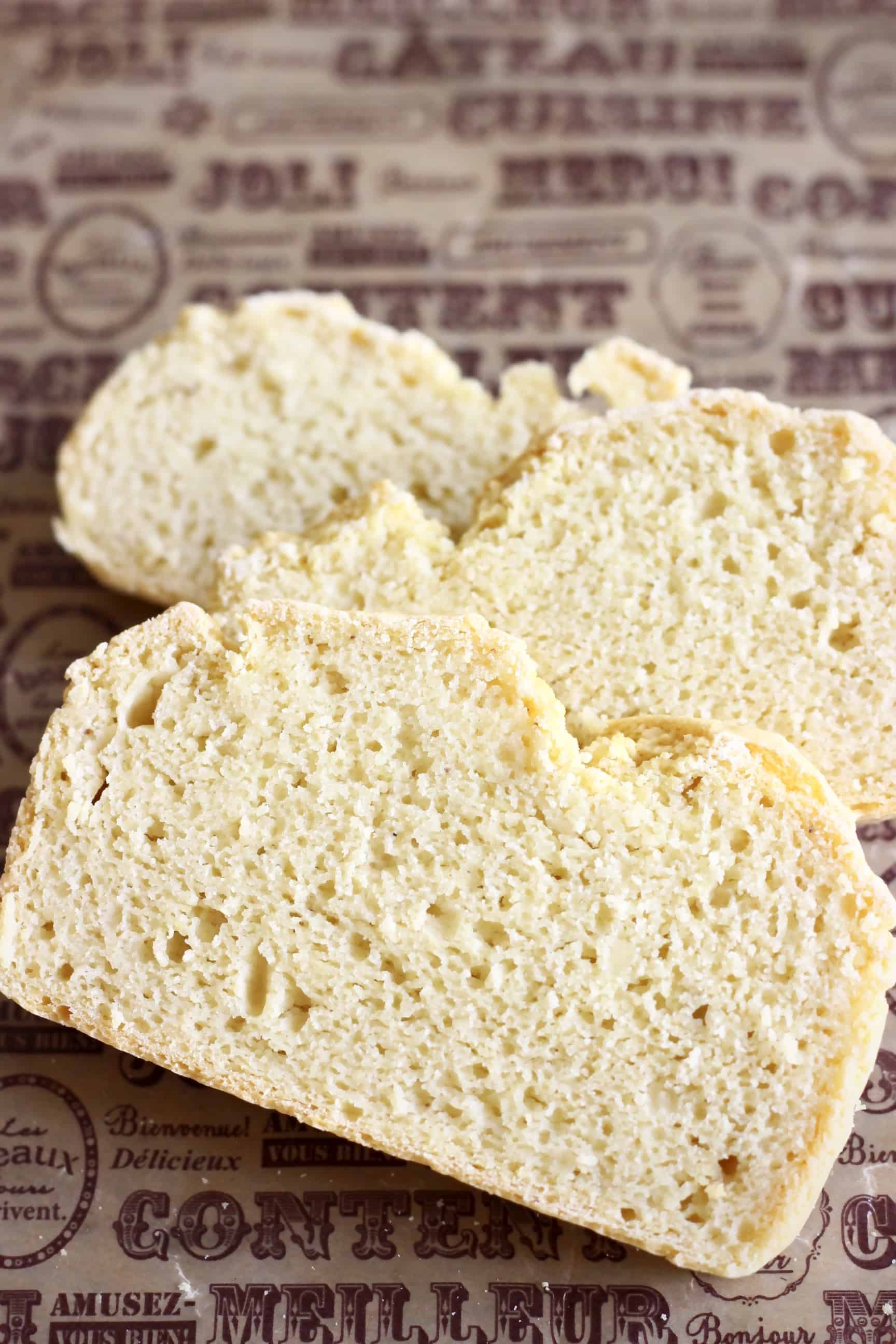
How to make this recipe
Scroll down to the bottom of the post to see the full recipe.
- Mix together all the ingredients in a glass mixing bowl.
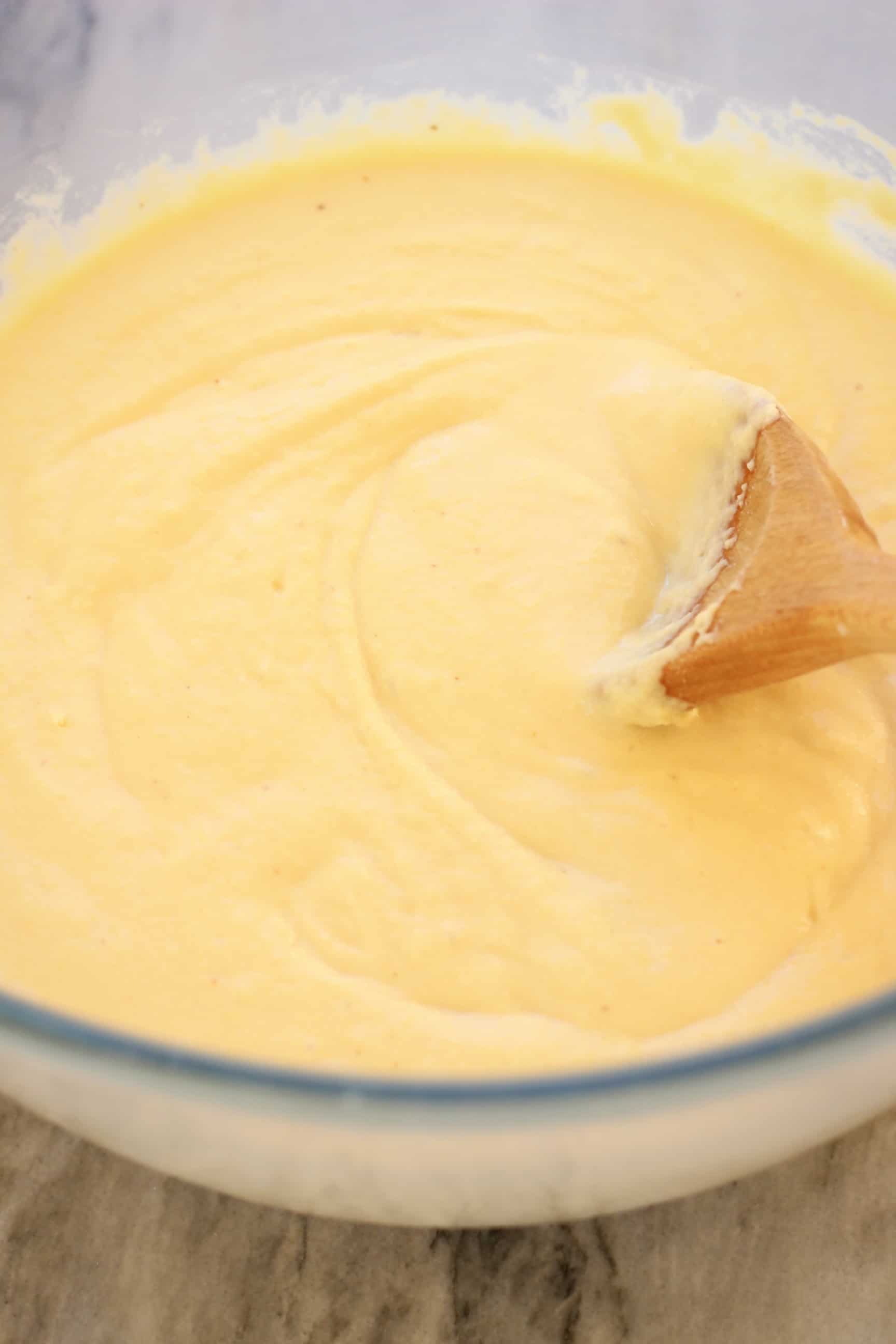
- Transfer the batter into a one-pound loaf tin.
Tip: Line the tin with greased baking paper to make the bread easier to remove after.
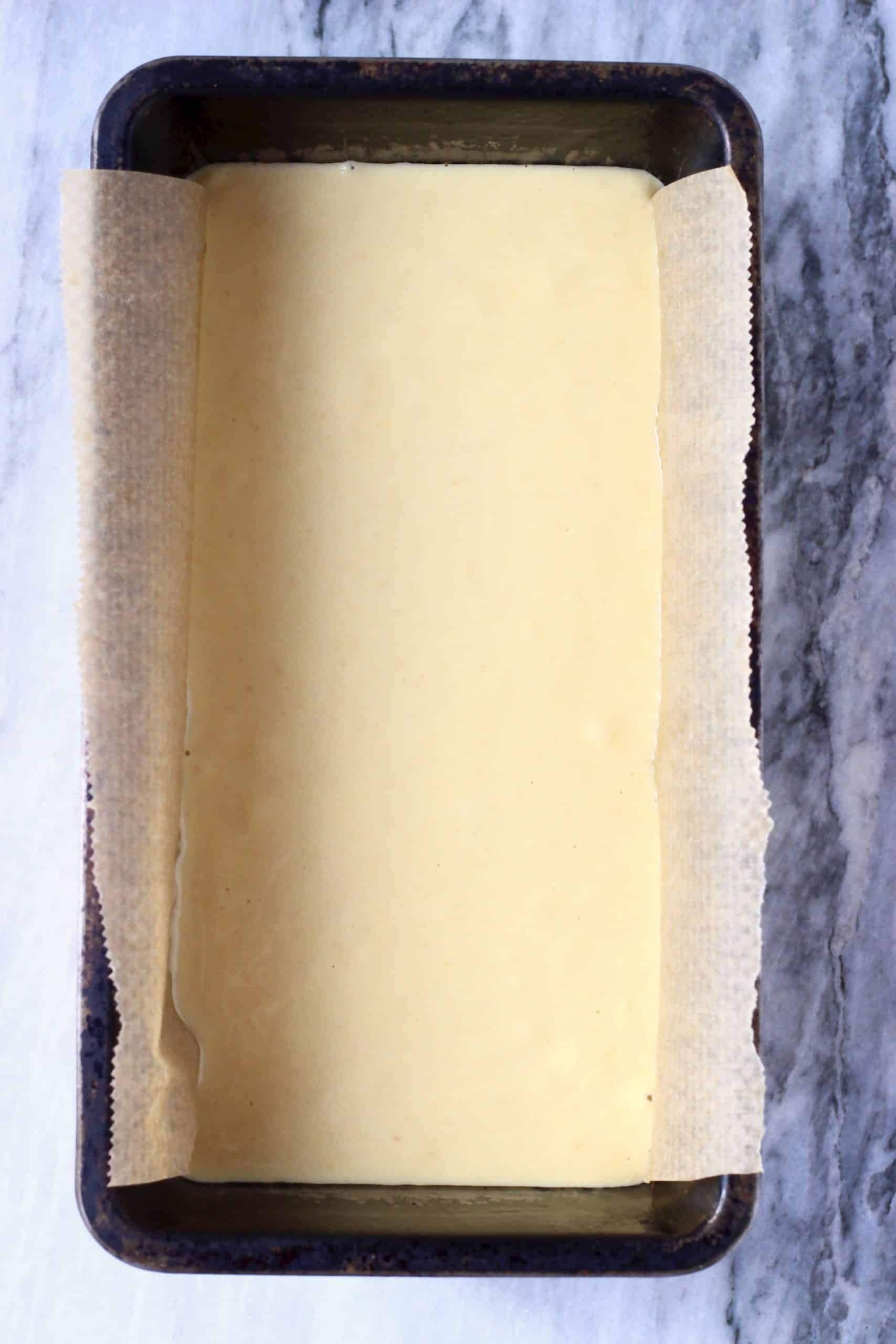
- Bake in the oven for around 50 minutes.
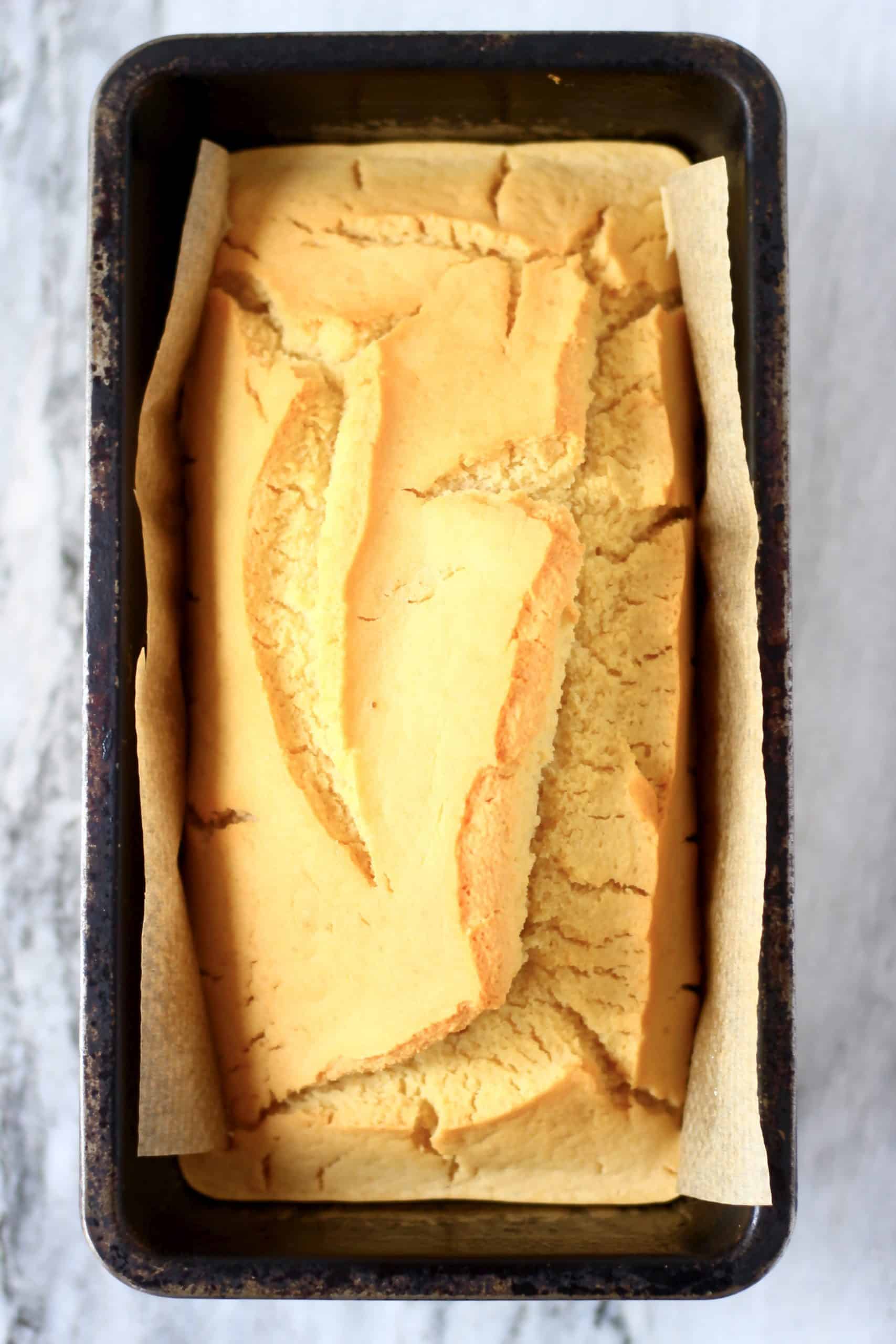
- Transfer the loaf to a cooling rack to cool down on completely before packing away to store because otherwise the steam from the warm bread will get trapped and you'll end up with soggy bread, which nobody wants!
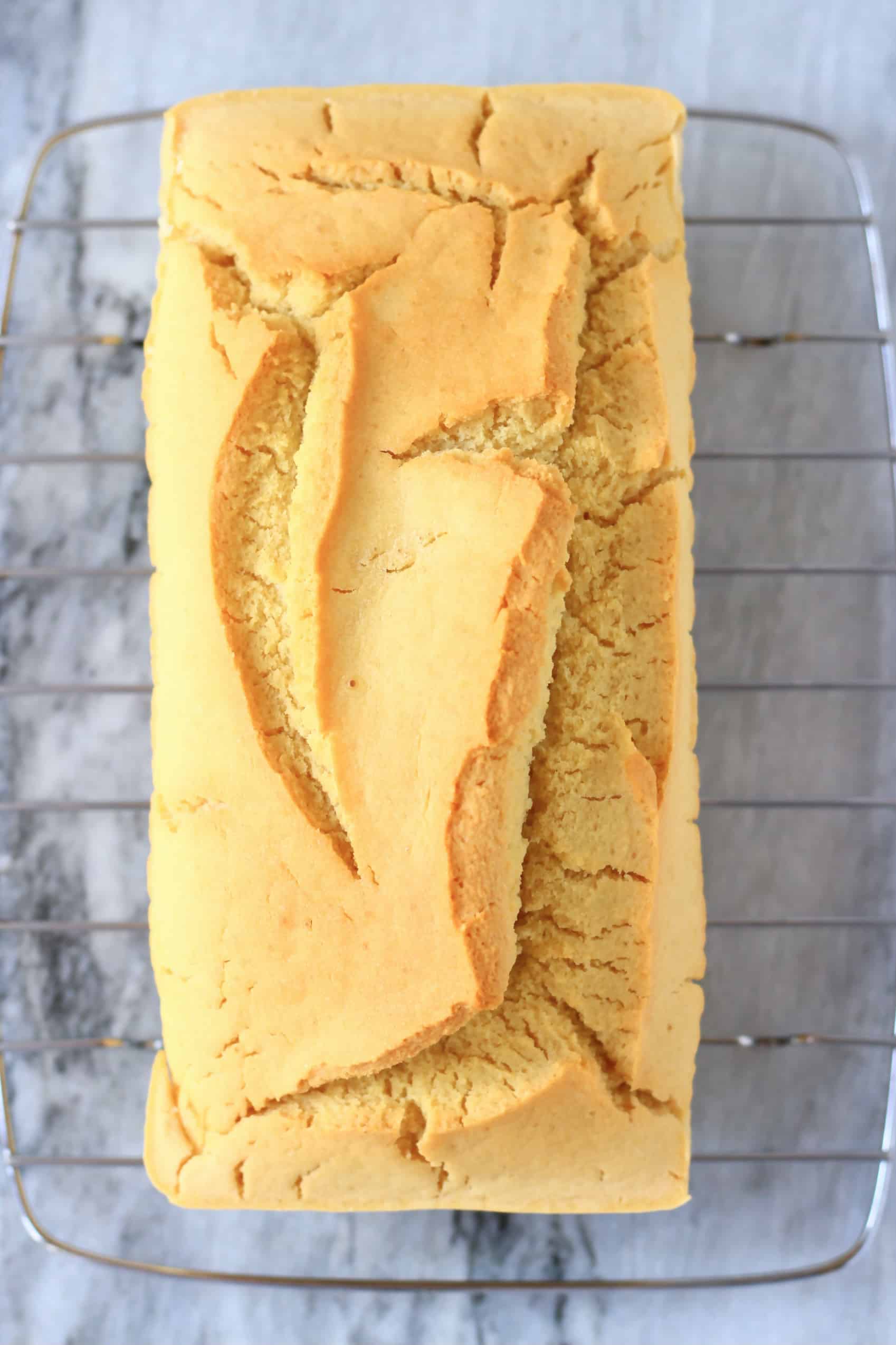
- It also needs to be left to cool completely before slicing.
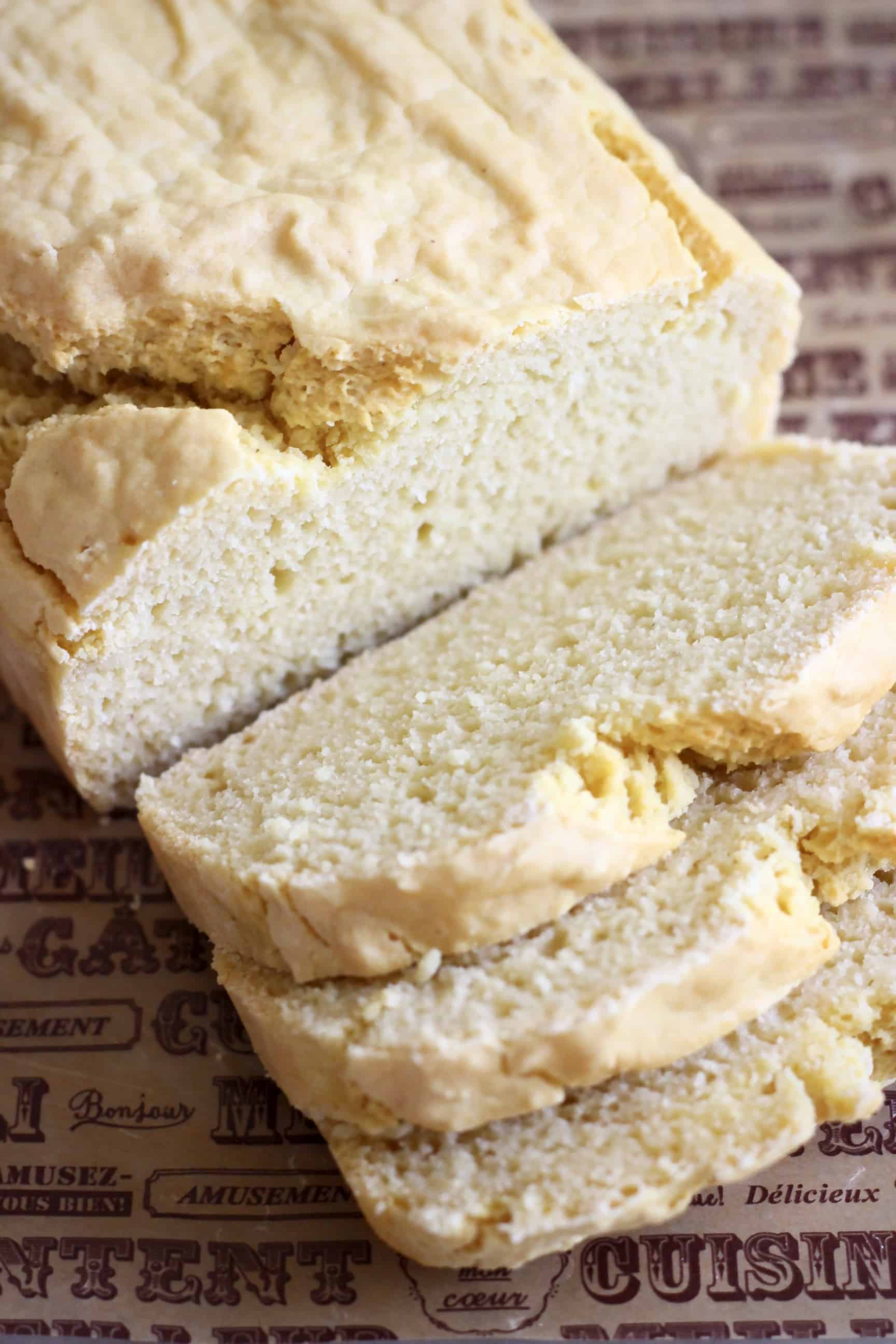
Tips for making this recipe
- Make sure to use the right amount of baking powder – 4 teaspoons! This may seem like a lot, but you need to use this amount to ensure the bread turns out light and fluffy.
- The apple cider vinegar is crucial as its acidity reacts with the alkali bicarbonate of soda (baking soda) to create a bubbly batter and fluffy bread.
- The batter might look more runny than you expect, but a lot of liquid is needed as chickpea flour absorbs a lot of moisture.
- Make sure that you line your one-pound loaf tin with baking paper and that you grease the baking paper with a little oil, to make sure the bread can be removed easily from the tin.
- You'll know when the bread is done when an inserted skewer comes out dry - it will probably have a few crumbs stuck to it, but if it comes out wet then the bread isn't done.
- If you've kept your bread in the oven for the right amount of time and it's still not done in the centre and the outside is becoming hard/burnt, then I would recommend covering it with a piece of baking paper to prevent the outside from becoming burnt, and continuing to bake it until an inserted skewer comes out dry.
Ingredients you can add to the dough
- Mixed seeds.
- Dried fruit such as dried cranberries, raisins, chopped dates etc.
- You can make it more savoury by adding grated garlic, chopped olives or sun-dried tomatoes!
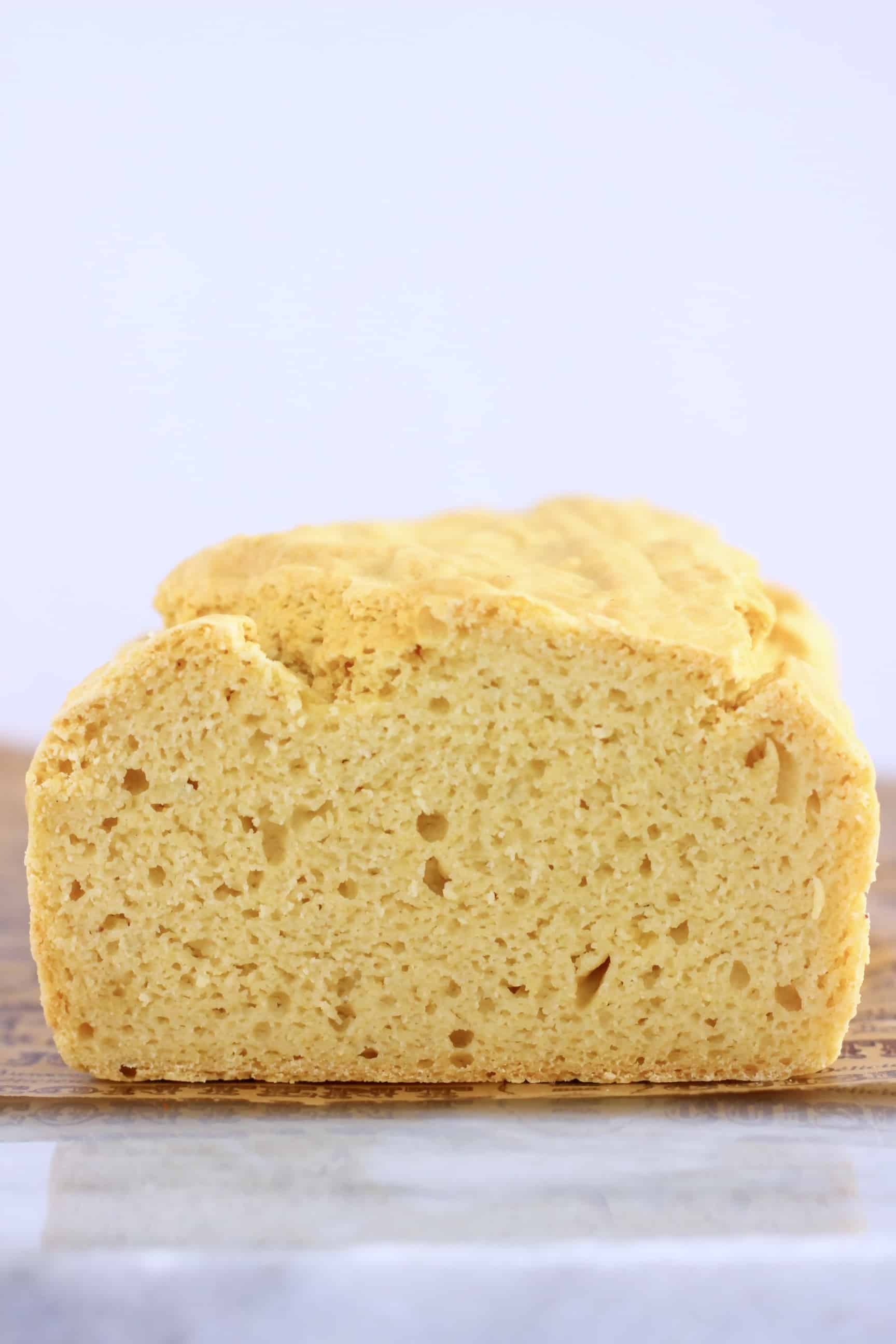
How long does it keep for?
This Gluten-Free Vegan Bread keeps well covered in the fridge for a good few days. If not eaten on the day it's made, it's best toasted before eating.
Can you freeze it?
If you're freezing it, you can just slice it up and put the whole thing in the freezer. Then when you want to eat it you can just pop the slices of bread in the toaster straight from frozen.
Serving suggestions
This bread is so delicious on its own topped with some coconut oil or nut butter and fruity jam, but it's also perfect for sandwiches. Here are some of my favourites:
- Vegan Grilled Cheese.
- White Bean "Tuna" Salad Sandwich.
- Chickpea Curry Salad Sandwich.
- Chickpea Mayonnaise Salad Sandwich.
- Hummus Toasted Sandwich.
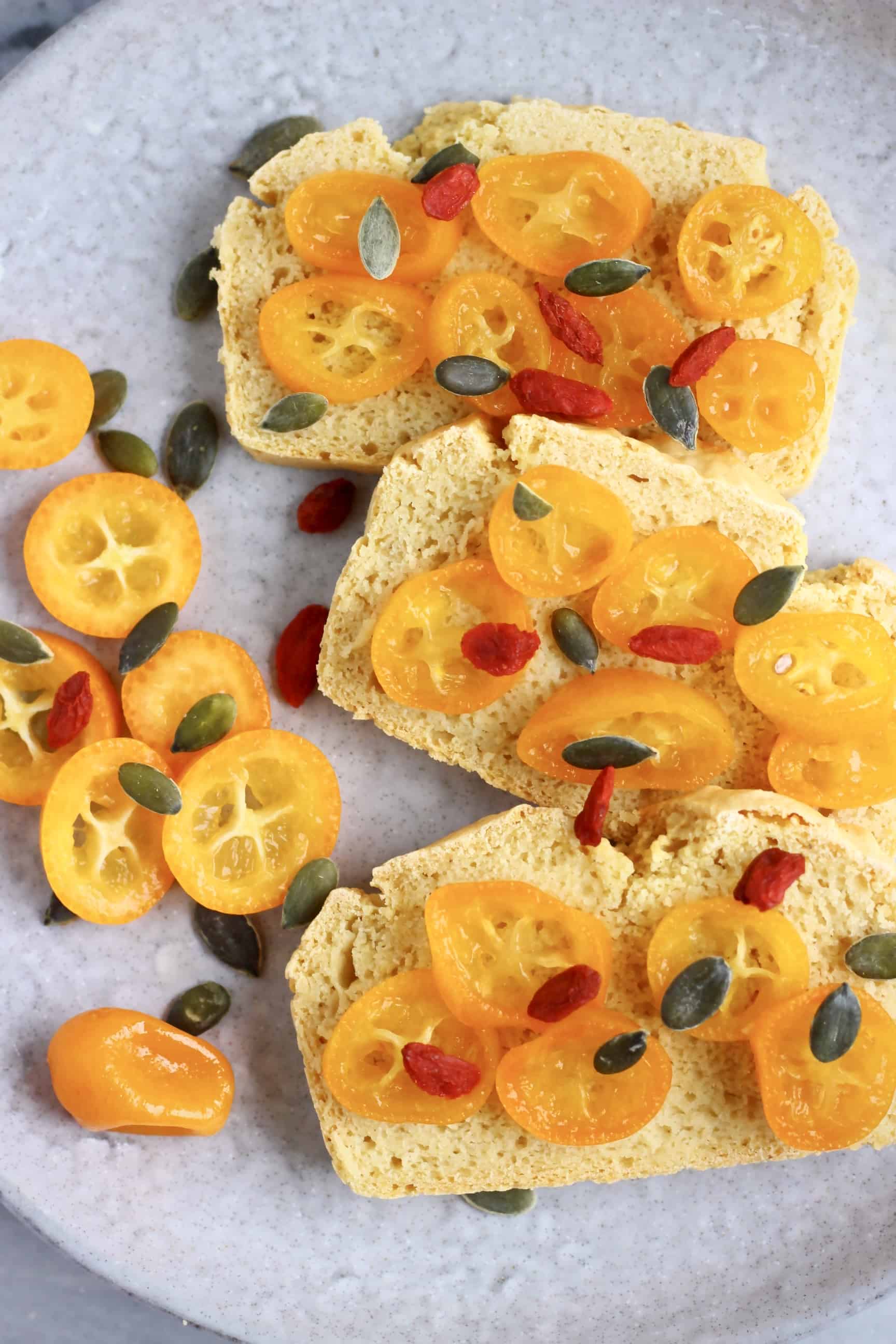
Similar recipes
- Gluten-Free Vegan Seeded Buckwheat Bread
- Gluten-Free Vegan Irish Soda Bread
- Gluten-Free Vegan Wraps
- Gluten-Free Vegan Rice Flour Bread
- Gluten-Free Vegan Bagels
- Gluten-Free Vegan Almond Bread
- Gluten-Free Vegan Oat Bread
- Gluten-Free Vegan Cornbread
If you try out this recipe or anything else from my blog, I’d really love to hear any feedback! Please give it a rating, leave a comment, or tag a photo @rhiansrecipes #rhiansrecipes on Instagram! Thank you.
Watch how to make this recipe
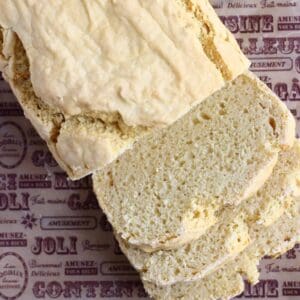
Gluten-Free Vegan Bread
Ingredients
- 150 g (1 ¼ cups) chickpea (gram) flour
- 150 g (1 ¼ cups) rice flour
- 2 tablespoons tapioca flour
- 4 teaspoons baking powder (ensure gluten-free if necessary)
- ¼ teaspoon bicarbonate of soda (baking soda)
- ¼ teaspoon salt (to taste)
- 310 ml (1 ⅓ cup) water
- 1 tablespoon apple cider vinegar (ensure gluten-free if necessary)
Instructions
- Preheat the oven to 180 degrees Celsius (350 degrees Fahrenheit).
- Place the chickpea flour, rice flour, tapioca flour, baking powder, bicarbonate of soda and salt in a large bowl and mix well.
- Add the water and vinegar and mix again.
- Transfer the mixture to a loaf tin (I used a one-pound loaf tin) lined with greased baking paper.
- Bake in the oven for around 50 minutes, until risen and an inserted skewer comes out dry - it will probably have a few crumbs stuck to it, but if it comes out wet then the bread isn't done.
- Leave to cool on a wire rack before putting away to store.
- Keeps well in the fridge for up to a few days.
Video
Notes
- The batter might look more runny than you expect, but a lot of liquid is needed as chickpea flour absorbs a lot of moisture.
- Make sure that you line your
one-pound loaf tin with
baking paper and that you grease the baking paper with a little oil, to make sure the bread can be removed easily from the tin.
- If you’ve kept your bread in the oven for the right amount of time and it’s still not done in the centre and the outside is becoming hard/burnt, then I would recommend covering it with a piece of baking paper to prevent the outside from becoming burnt, and and continuing to bake it until an inserted skewer comes out dry - it will probably have a few crumbs stuck to it, but if it comes out wet then the bread isn't done.
- Make sure to leave the bread to cool down completely on a
cooling rack before packing it away to store because otherwise the steam from the warm bread will get trapped and you’ll end up with soggy bread, which nobody wants!
- It keeps well covered in the fridge for a good few days. If not eaten on the day it’s made, it’s best toasted before eating.
- If you’re freezing it, you can just slice it up and put the whole thing in the freezer. Then when you want to eat it you can just pop the slices of bread in the toaster straight from frozen.
Disclosure: This posts contains affiliate links to Amazon. If you purchase any of these products, a small percentage will come to me with no extra cost to you! This income will go towards the running of this blog – thank you.


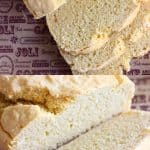




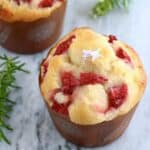
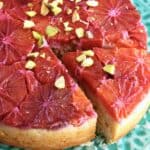
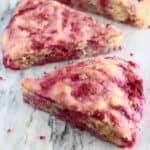
Janice
Hi Rhian, could I replace both the rice flour and the tapioca flour with the same amount of wholewheat pastry flour? Thank you.
Rhian Williams
Hello - yes that should be fine!
Janice
Hi Rhian, could I replace both the rice flour and the tapioca flour with the same amount of the self raising flour? Omit the baking powder, baking soda and vinegar? Thank you.
Rhian Williams
Hi - yes you can replace the rice flour and tapioca flour with the same amount self-raising flour! I would suggest just adding one teaspoon of baking powder though to help the chickpea flour rise, and also you should add the baking soda and vinegar. I hope that helps!
Naomi
Hi, what could I use in place of chickpea flour?
Thank you.
Rhian Williams
Hi - thanks for asking! If you don't want to use chickpea flour, I recommend using a different bread recipe. I have posted a lot of bread recipes using different types of flours. You can find all the recipes here: https://www.rhiansrecipes.com/bread-recipes/
Hope that helps!